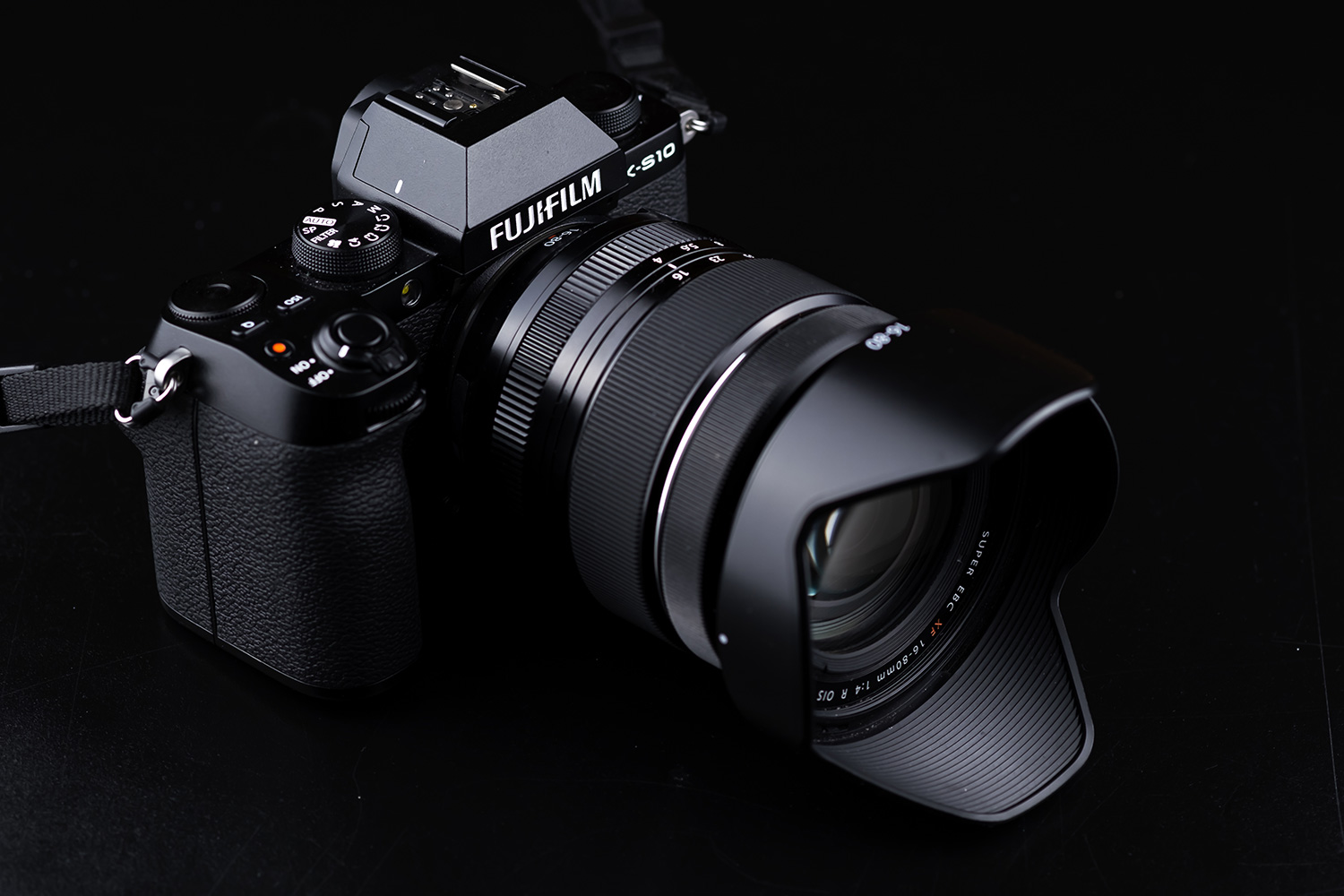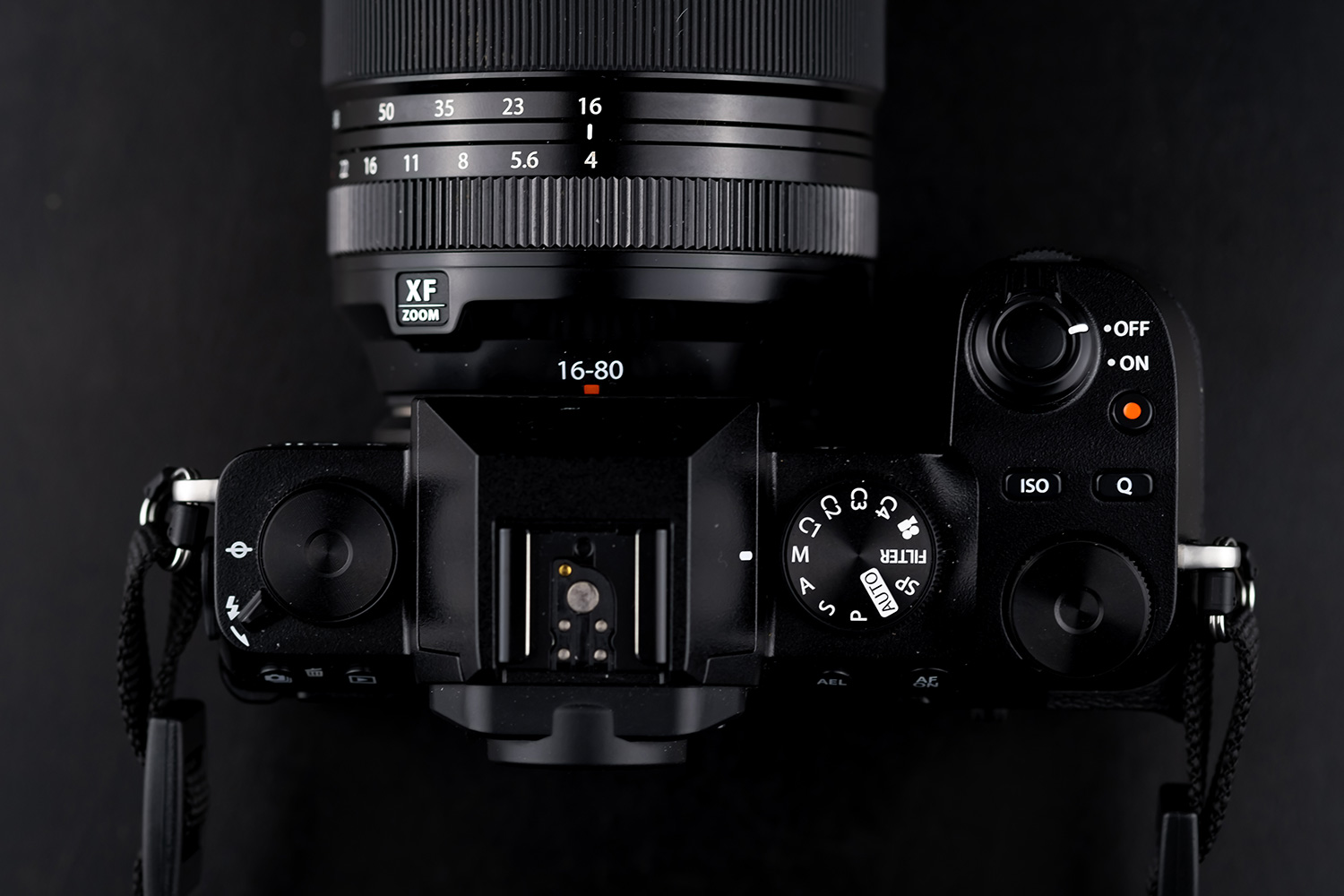Fuji X-S10 – A Great Introduction To Fuji
The Fuji X-S10 was released in November 2020. When I read the spec list, I was immediately intrigued. Similar to the older X-H1, Fuji did away with the traditional analogue dials normally associated with their cameras in favour of a PASM dial in a move obviously designed to attract DLSR users to the Fuji ecosystem.
Also, despite its compact size and budget price, the camera had In Body Image Stabilisation (IBIS), a fully articulating screen and the same sensor as the more expensive flagship Fuji X-T4. It was a camera I would’ve definitely considered buying if I had not just bought the Fuji X-T3 a few months previously.



Fast forward to October 2021, I got the chance to try the camera on loan from a company called MPB. I use MPB for a lot of my gear purchases. They are the world’s largest resale platform for digital photography and filmmaking kit.
I was looking forward to trying out the camera as I had used a lot of Fuji cameras over the previous few years and was interested to see how the combination of the Fuji Sensor and colour science worked with the more traditional DSLR controls.


Photography is both my job and my hobby. For my professional work, I mainly specialise in Architectural Photography which is quite technical, and a lot of thought and precision needs to go into composing shots. I also need a lot of gear, including lights, tripods etc, when on location.
All of this means that when it comes to my personal work I like to keep things as simple as possible. I’ve been looking for a one camera/one lens set up for a while that I can bring with me on hikes. This is my way to relax, so the fewer distractions, the better. I like to walk with a camera in hand and shoot whatever catches my eye.
It is far more immersive than having to stop, set up a tripod, compose the shot and then having to disassemble everything before moving on. My approach to landscape photography is more of a documentary-style gathering snapshots as I go. It is my mindfulness.


I paired the camera with the Fuji 16-80mm F4 lens. It has a nice wide focal range which allows me a lot of options from capturing full vistas to close-ups. The only downside is that it is quite large when compared to a lot of other Fuji lenses and using it with the very compact Fuji X-S10 looked like the size might be even more of an issue.

This brings me to the first feature that impressed me with the camera – The Grip. In order to fit the In Body Image Stabilisation system into the compact body of the X-S10, Fuji turned the battery compartment sideways, which resulted in a grip that is substantial, and the camera feels both comfortable and secure to hold.
With the larger lens attached, the overall setup feels nicely balanced and can be carried for long periods without having to worry about it slipping from my hand. In this regard, it is definitely an improvement over other Fuji cameras that I have used.


When I started looking at the more compact mirrorless options, the first camera I bought was the Olympus OM-D E-M10 Mark II. One of the things that impressed me most about it was the In-Body Image Stabilisation (IBIS). When I moved over to Fuji, I missed this feature, so it was one of the main reasons I wanted to try out the X-S10.
IBIS allows for a lot more freedom because I can shoot at slower shutter speeds in lowlight conditions without needing a tripod, and in the X-S10, it offers 6 stops of image stabilisation. This means that I can use it in a limited capacity for long exposure shots handheld. The Fuji X-H1 and the Fuji X-T4 also feature IBIS, but it is great to also have it in the compact X-S10 as well.

When I read the initial reviews of the camera, the one feature that seemed to divide people the most was the fully articulating screen. All the Fuji cameras I had before it either had flip out or fixed screens, so it was my first time trying out this type of screen.
It did take a little getting used to, and there are times when it slows me down, but there is no denying the flexibility it offers when it comes to experimenting with different points of view. I am not going to say it is better than a flip-out screen, but it does offer a nice alternative.
I don’t do a lot of video work, but it would definitely be an advantage for videographers who might be interested in this camera. Combined with the IBIS, the screen allows a lot of flexibility when composing shots.


RIGHT: Fuji X-S10 . Fuji XF16-80mmF4 @54.50mm . f/8 . 1/30″ . ISO 160
While the camera is compact and lightweight, it still houses the latest 26 megapixels APS-C sized BSI X-Trans sensor, which is the same as the larger and more expensive Fuji X-T4 and X-Pro3. It also has the same X-Processor 4 image processor as those cameras.
This means that it produces amazing images. In the weeks after I got the camera, I spent a lot of time out exploring and capturing one of the best autumns we have had in Ireland in recent years. The colours were spectacular.
Fuji’s are famed for the colour reproduction, and this was exactly what I needed as I wandered the forests and back roads around my home town with the camera in hand. It was great to be able to capture these wonderful memories in all their glory.


RIGHT: Fuji X-S10 . Fuji XF16-80mmF4 @72.10mm . f/5.6 . 1/125″ . ISO 250


RIGHT: Fuji X-S10 . Fuji XF16-80mmF4 @60.80mm . f/4.0 . 1/200″ . ISO 160




RIGHT: Fuji X-S10 . Fuji XF16-80mmF4 @80mm . f/4.0 . 1/3200″ . ISO 160

The camera doesn’t have the usual analogue dials normally associated with Fuji but most of the dials and buttons are customisable and can be set up to suit your shooting style. The back screen is a touch screen and allows you to set focus by tapping on it. You can also use it to access different options in the Q menu.
There is a dedicated dial for film simulations on the top left, and the camera has all the simulations that are available on the X-T4. The camera is suitable for both beginners and more experienced photographers and it is a great introduction to the Fuji ecosystem for people who have been thinking about making the jump from DSLR’s.

There is no such thing as the perfect camera, and there are a few features that were missing on this camera that I would have liked to have seen included. The first is that it is not weather-sealed, which is not good for a camera that will be predominantly used outdoors, but truth be told, I rarely head out walking in the rain, so it hasn’t been an issue yet.
Secondly, there is only one card slot. This means that I would be wary about using it for paid professional work due to the possibility of losing images if a card failed. For any experienced Fuji users, it is a bit of an adjustment to get used to the new control layout. But once it clicks, it is a very easy camera to use, even in full manual mode.



RIGHT: Fuji X-S10 . Fuji XF16-80mmF4 @34.20mm . f/5.0 . 1/160″ . ISO 160

This is not a technical review. There are plenty of those out there. It is really just a collection of my thoughts after using the camera for a few weeks. I really enjoyed my time with it and paired with either the Fuji 18-55mm or 16-80mm it is ideal as an everyday carry.
Most importantly, I was very happy with the photos I got. When the time came to return the camera after the loan period was over, I couldn’t part with it, and I am now a proud owner of a Fuji X-S10.
All the photos of the X-S10 here were taken with a Fuji X-T3 with the Fuji 60mm f2.4 Macro.
The camera and lens can be bought using the links below:
Fuji X-S10
Fujinon XF16-80mm F4



RIGHT: Fuji X-S10 . Fuji XF16-80mmF4 @56.50mm . f/5.6 . 1/80″ . ISO 250



RIGHT: Fuji X-S10 . Fuji XC50-230mmF4.5-6.7 @230mm . f/6.7 . 1/320″ . ISO 160


“I am an award-winning professional photographer based in Tullamore, Co Offaly. I am also a member of the Irish Professional Photographers & Videographers Association.
My photographic journey began back in 2008 when I got my first iPhone. I started out by taking snapshots of my children. As the old saying goes ‘The best camera is the one you have with you’ and I always had my phone so I was able to capture all those candid and impromptu moments of early childhood.
I started my photography business in January 2018 and in my first year, I was accepted as a member of the Irish Professional Photographers and Videographers Association. I also won the Photographer of the Year Award at the 2018 Midlands 103 Customer Service Awards.
Photography is not a job to me, it is my passion. When I am not taking photos for clients I am constantly taking photos for myself in order to keep learning and improving. When I am taking photos for myself or for my clients my goal is to use the images I create to tell a story and give the viewer an emotional connection to the photos.”





Jerry
February 18, 2022 @ 9:22 pm
Great review of the X-S10. I’m not a Fuji shooter, went with Nikon, but love what they are doing with the X series.
Paul Moore
February 20, 2022 @ 8:23 pm
Thanks Jerry. Good to hear that you liked it.
Albert Smith
February 19, 2022 @ 2:39 pm
I’m “Full-Fuji”, but I emailed a link to this article to a photo buddy that has been trying to decide on a camera system to upgrade from his Nikon D300. I’ve bragged on my positive experience with Fujifilm, but it never resonated with him.
He devoured your article and sent me multiple emails asking how a camera and lens could be so good. He was very impressed with your work and I have a feeling that he might be joining me in the Fuji-verse.
Paul Moore
February 20, 2022 @ 8:35 pm
Cheers Albert. Good to hear he enjoyed the article. And that we have another Fuji convert 🙂
Jerred
February 22, 2022 @ 11:38 am
Beautiful images, Paul. I’m likely to get an X-S10 soon for b-roll in the field for my YouTube videos, and it’s great to know how easily it will also take photos if I decide to only take one camera into the field.
Paul Moore
February 25, 2022 @ 7:16 pm
Cheers Jerred. I think you will be very happy with the camera. It is compact and lightweight and with the IBIS it is ideal for b-roll footage. And you can capture great photos with it too 🙂
Stephen Schmid
March 12, 2022 @ 3:42 am
Beautiful images! My biggest gripe with the X-S10 is the lack of the focus mode switch that the other Fujifilm cameras have.